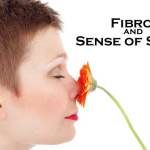
Carpal tunnel syndrome is a common condition affecting millions of people around the world, mainly due to the repetitive nature of some jobs. Symptoms can vary widely, but most patients report stiffness, pain, tingling, or numbness in the arm and arm that get worse after exercise. Carpal tunnel syndrome is when the median nerve, the most important nerve in the hand and forearm, contracts under pressure as it travels through the carpal tunnel. The median nerve is a group of sensory nerves that connect the brain to the hand and forearm.
Carpal tunnel syndrome, or CTS, is caused by overuse of the hand. It is not a disease, but is more commonly known as pinched nerve syndrome.
Carpal tunnel syndrome is a very frustrating condition for sufferers as the symptoms can be extremely debilitating and frustrating. However, there are effective treatments. Doctors often recommend surgery to relieve pain and discomfort. Surgery can repair nerve damage and reduce symptoms. But in some cases, pain and numbness persist or worsen over time and therefore may require treatment that includes pain relievers and nausea medications, chiropractic corrections, electrical stimulation, and muscle relaxants.
Chiropractic adjustments help improve circulation and relieve symptoms by applying constant force to the affected nerve. This can be done with an arm splint or a special bandage. Electrical stimulation or acupuncture helps relax muscles, reduce inflammation, and improve blood circulation. Muscle relaxants help control pain and numbness and are used in conjunction with other pain relievers. It is important to note that these treatments can also provide some relief of symptoms and pain, but they cannot reverse symptoms and should never be used as the main treatment for carpal tunnel syndrome.
There are also non-surgical treatment options for most people. Chiropractic adjustments and electrical stimulation are usually combined with other non-surgical treatment options to improve overall health.
Carpal tunnel syndrome can be treated with a combination of anti-inflammatory drugs, massage, heat and massage, electrical stimulation, and muscle relaxants. To relieve symptoms, these treatments can be performed three times a day, once in the morning, once at night, and then two or three times at night, followed by exercise or stress management program.

In many cases, the symptoms of wrist syndrome go away on their own. However, if the condition has progressed to the point where surgery can be recommended, the doctor will assess if any physical therapy is needed to relieve the pain.
If symptoms persist, your doctor may recommend the use of an Ilium Joint Support Device (IJSD), a device that supports the elbow joint to relieve pressure on the wrist canal. IJsDS devices help reduce pain and provide support for the carpal tunnel. These jigs are made of soft, flexible rubber, similar to the sliding jigs worn by runners.
IJsDS devices are most effective when used in combination with pain relievers such as NSAIDs. Some people experience increased pain after using IJSD, but others do not report a change in symptoms. In this case, patients may want to consider other pain relief options. There are also non-steroidal anti-inflammatory drugs (NSAIDs) for pain management, as well as over-the-counter analgesics such as Tylenol or aspirin.
NSAIDs or NSAIDs can cause some side effects in some people. Therefore, doctors may prescribe certain medications in addition to the IJsDS to relieve symptoms. However, this should not be the first choice for a patient seeking relief from carpal tunnel syndrome.
Massage is another alternative that can help relieve some of the symptoms associated with carpal tunnel syndrome. It is not as efficient as using IJsDS or using IJSD. However, for some patients this may bring some relief, especially when combined with the use of IJsDS devices.
Some patients find massage to help relieve pain and discomfort. Patients are encouraged to visit their physicians for further evaluation and to discuss other options, including the use of pain relievers, before undergoing massage therapy for pain relief.